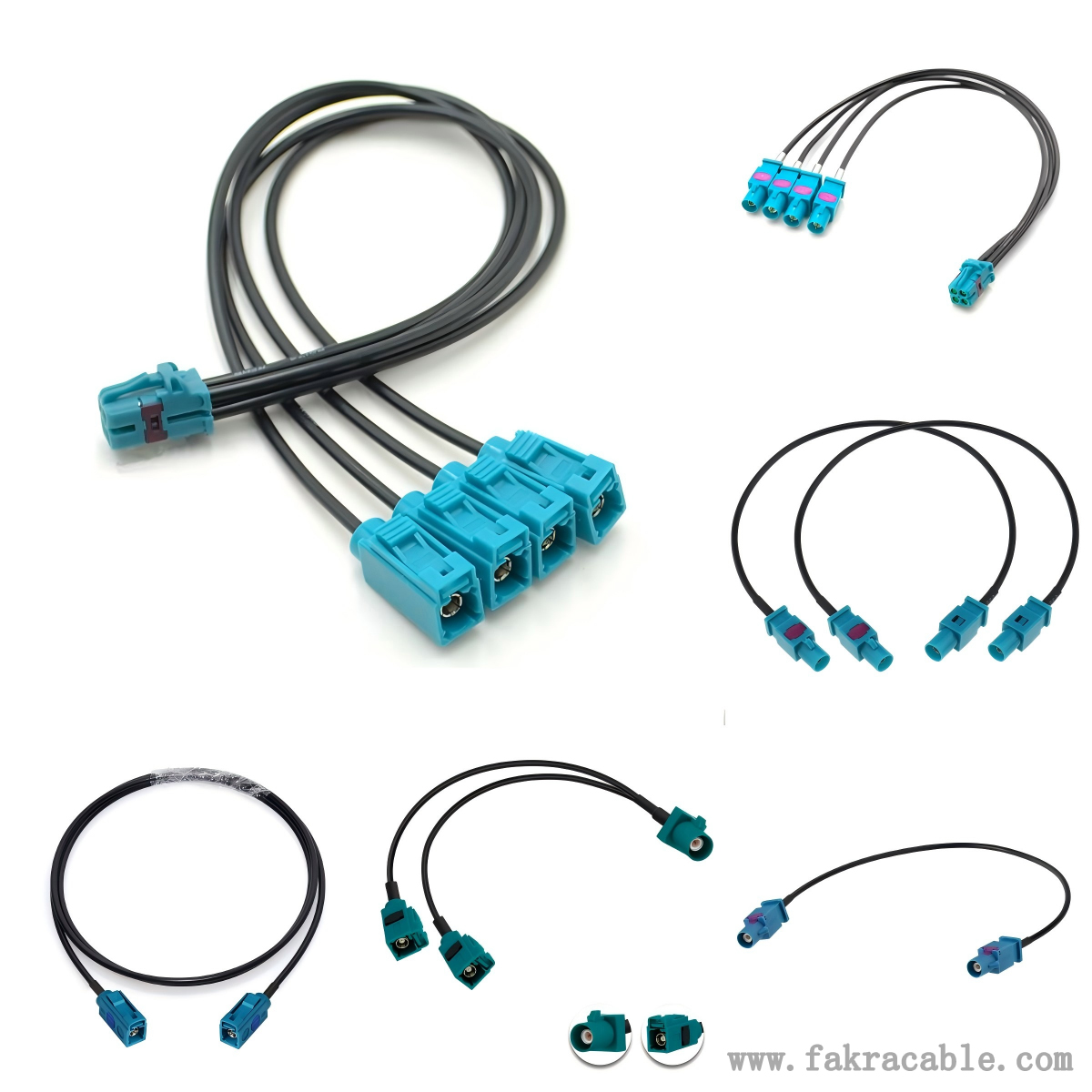Daily maintenance of Mini Fakra cables
The daily maintenance of Mini Fakra cables mainly includes visual inspection, cleaning, avoiding excessive bending, and regular testing. The following are specific maintenance methods:
Appearance inspection: Regularly inspect the appearance of the cable, check for any damage, scratches, aging, cracking, etc. on the outer skin, and pay special attention to the interface at both ends of the cable to check for looseness, deformation, damaged pins, and other issues. If any damage is found on the outer sheath of the cable, it should be wrapped with insulating tape in a timely manner to prevent the internal core wire from being exposed; If there is looseness at the interface, it should be tightened in a timely manner. If the pins are damaged, a new interface or cable should be replaced.

Cleaning treatment: Keep the cable clean and avoid dust, oil stains, etc. from accumulating on the surface and interface of the cable. You can use a clean soft cloth to gently wipe the surface and interface of the cable to remove dirt and dust. If there are stubborn stains such as oil stains, a small amount of specialized electronic device cleaner can be used for wiping, but attention should be paid to avoiding the cleaner from flowing into the interior or interface of the cable to avoid damage.
Avoid excessive bending: Mini Fakra cables should be avoided from excessive bending, twisting, or stretching in daily use. When wiring and organizing cables, it is important to leave enough space to avoid excessive external pulling on the cables.
Regular performance testing: Use professional testing equipment such as network analyzers, multimeters, etc. to conduct regular performance tests on Mini Fakra cables. The testing content includes parameters such as cable conductivity, insulation resistance, characteristic impedance, signal transmission loss, etc., to ensure that the various performance indicators of the cable meet the requirements. If any parameter is found to be abnormal, the cause should be promptly identified and repaired or the cable replaced.
Environmental maintenance: Try to install cables in a dry and well ventilated environment, avoiding prolonged exposure to moisture, high temperatures, or corrosive gases. A humid environment can easily lead to aging of the cable sheath and a decrease in insulation performance. High temperature environments can accelerate the aging of materials inside the cable, while corrosive gases can cause corrosion damage to the cable sheath and metal components. If cables need to be used in special environments, corresponding protective measures should be taken, such as using waterproof, high temperature resistant, or corrosion-resistant cable protective covers.
Contact: Mandy He
Phone: 15170973126
E-mail: obdwire@126.com
Whatsapp:
Add: 2nd Floor, Building 14, Aviation Science and Technology Innovation Area A, Nanchang Gaoxin Zone, Nanchang, China
We chat
